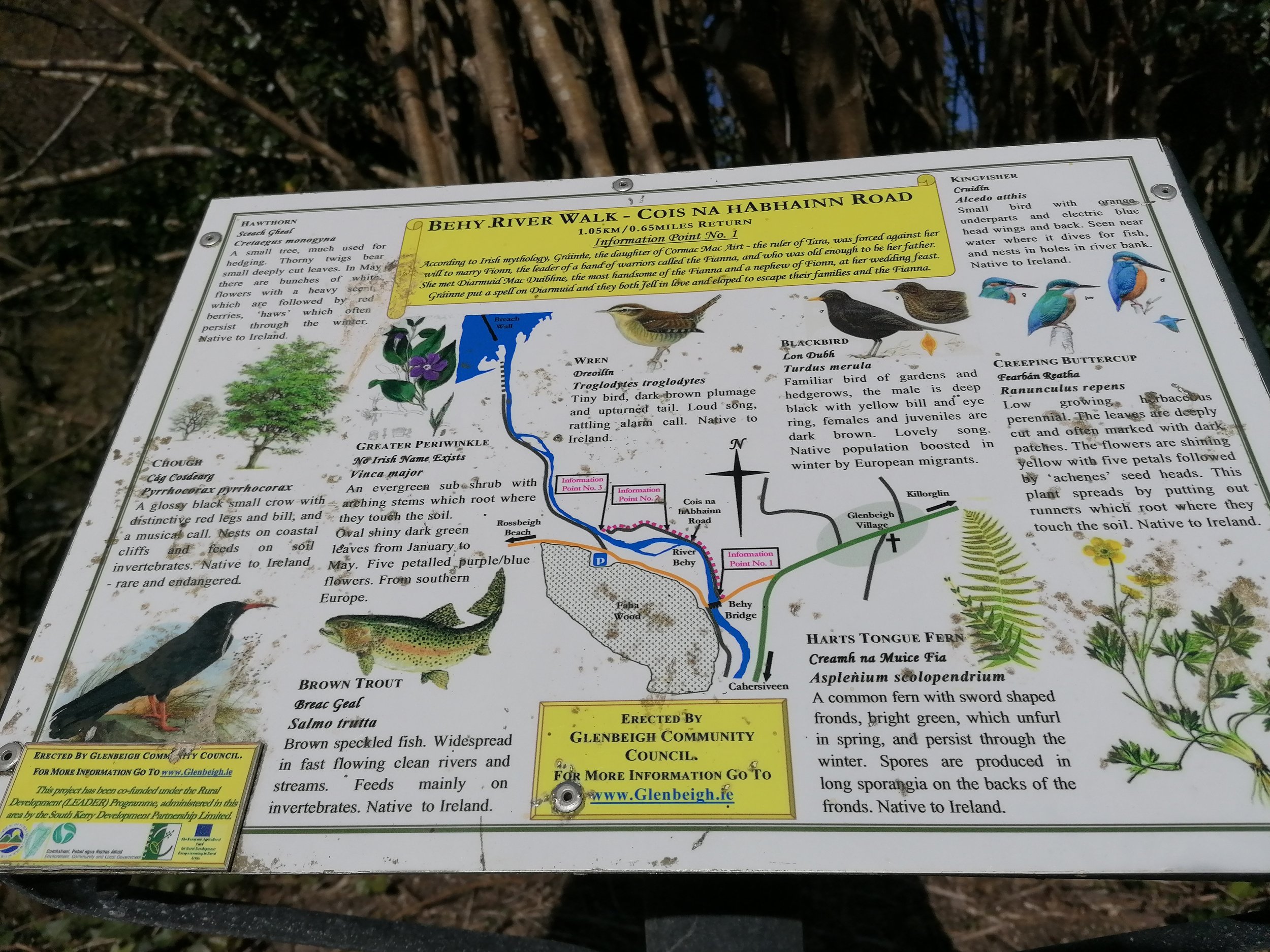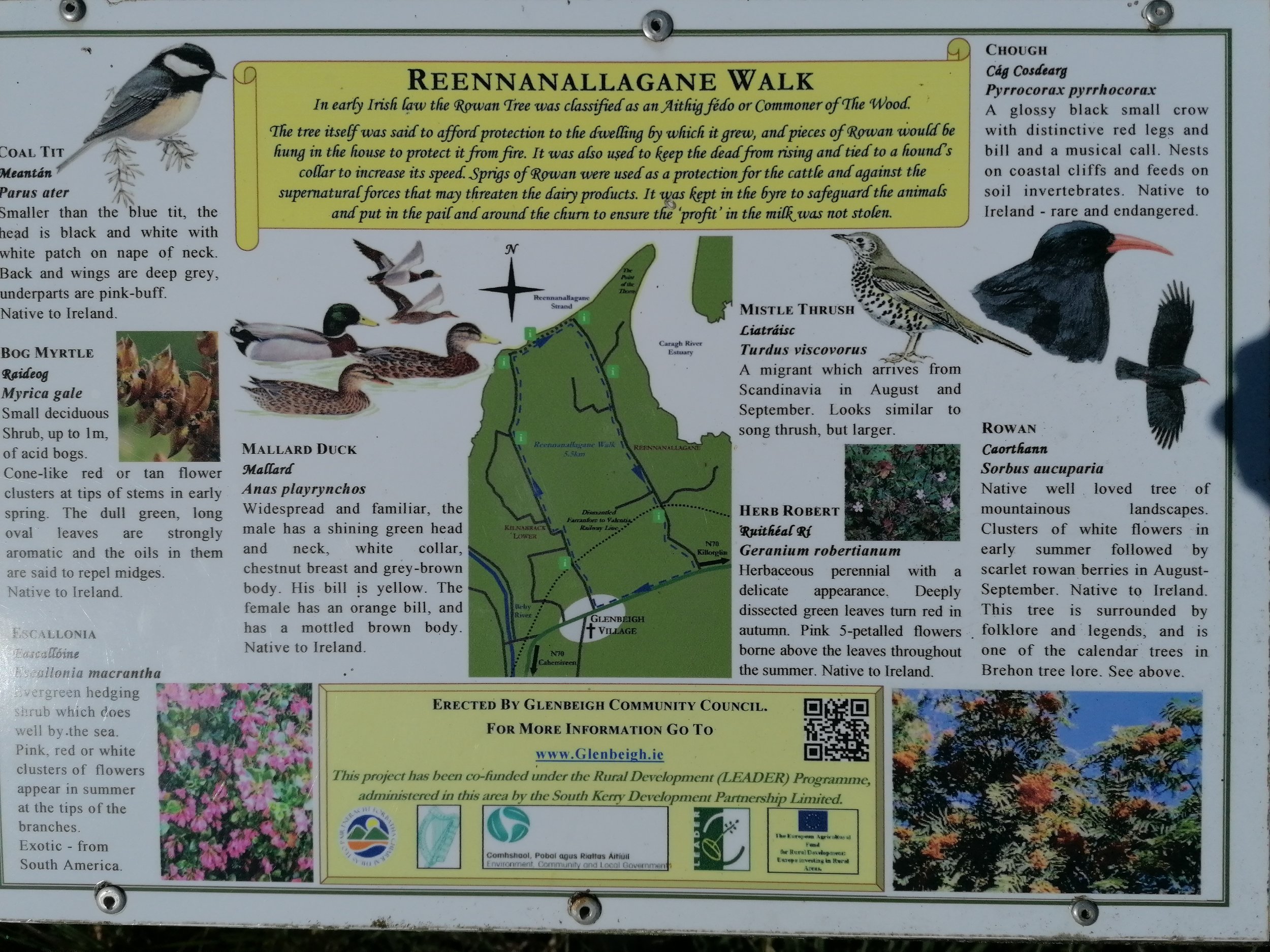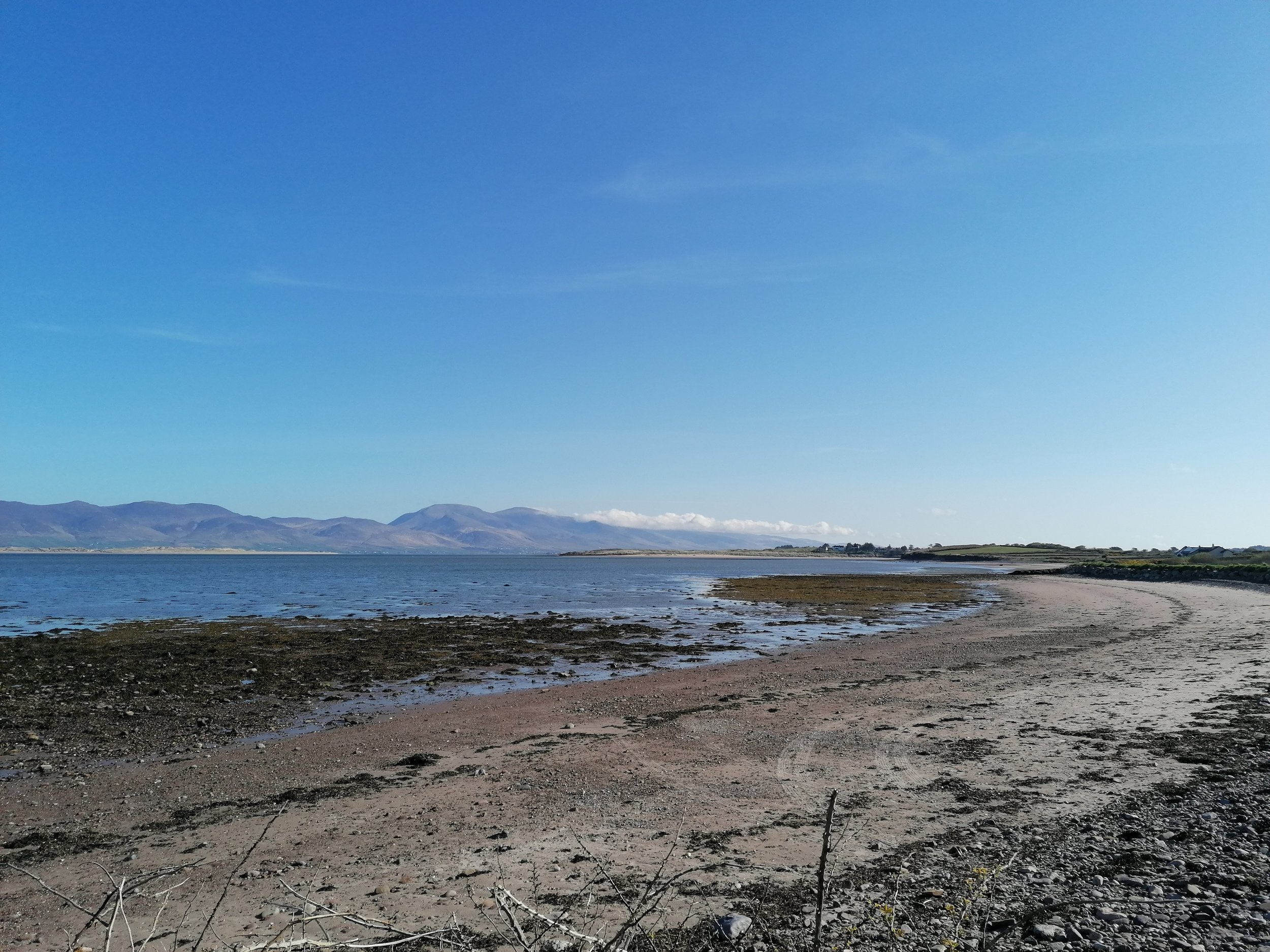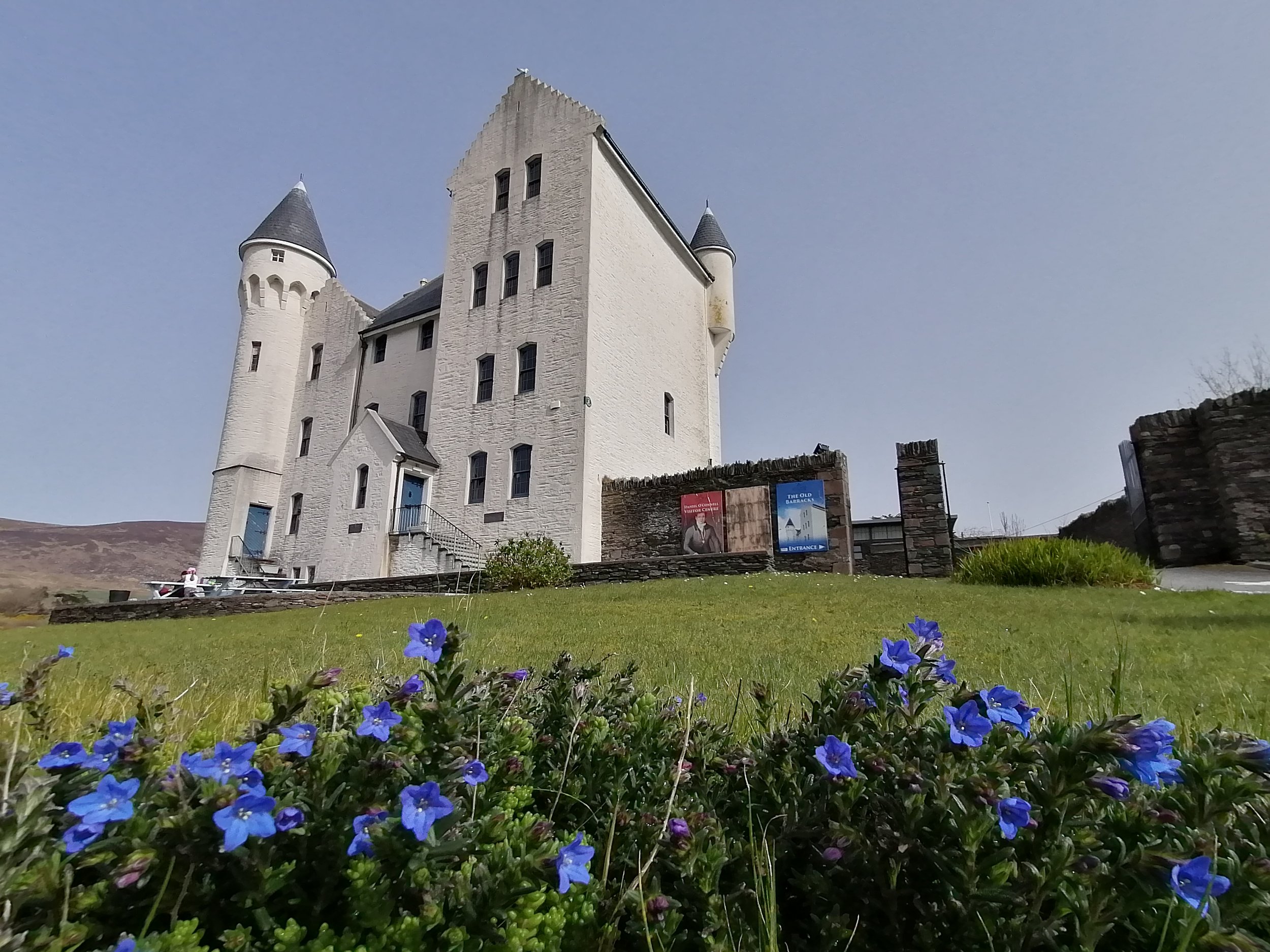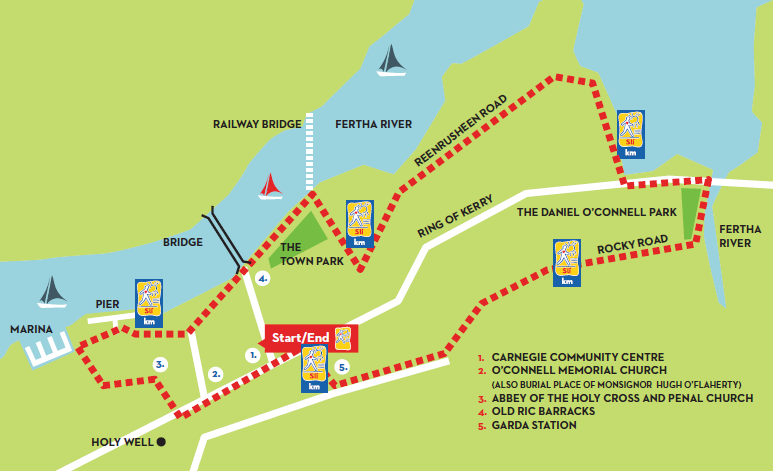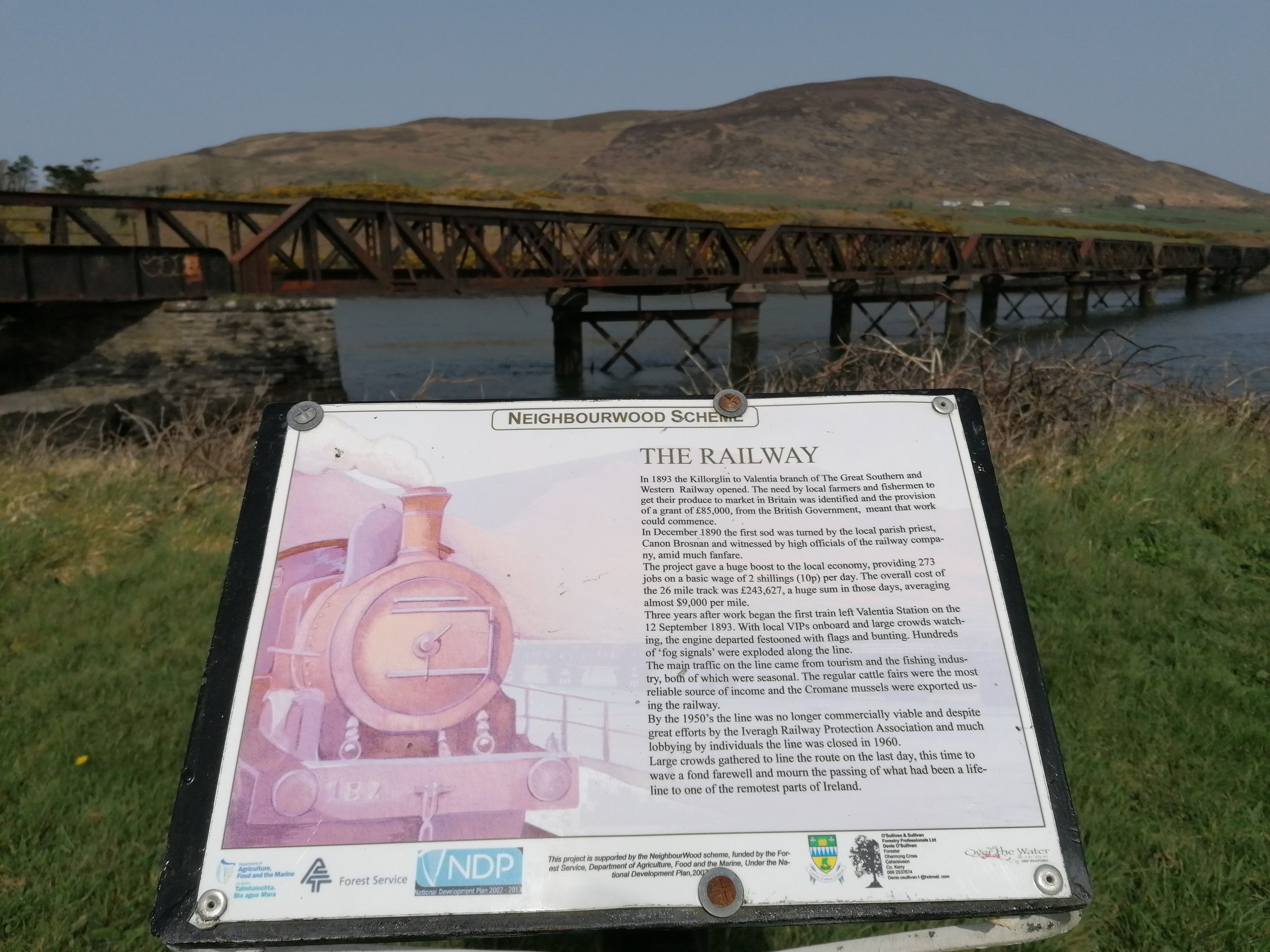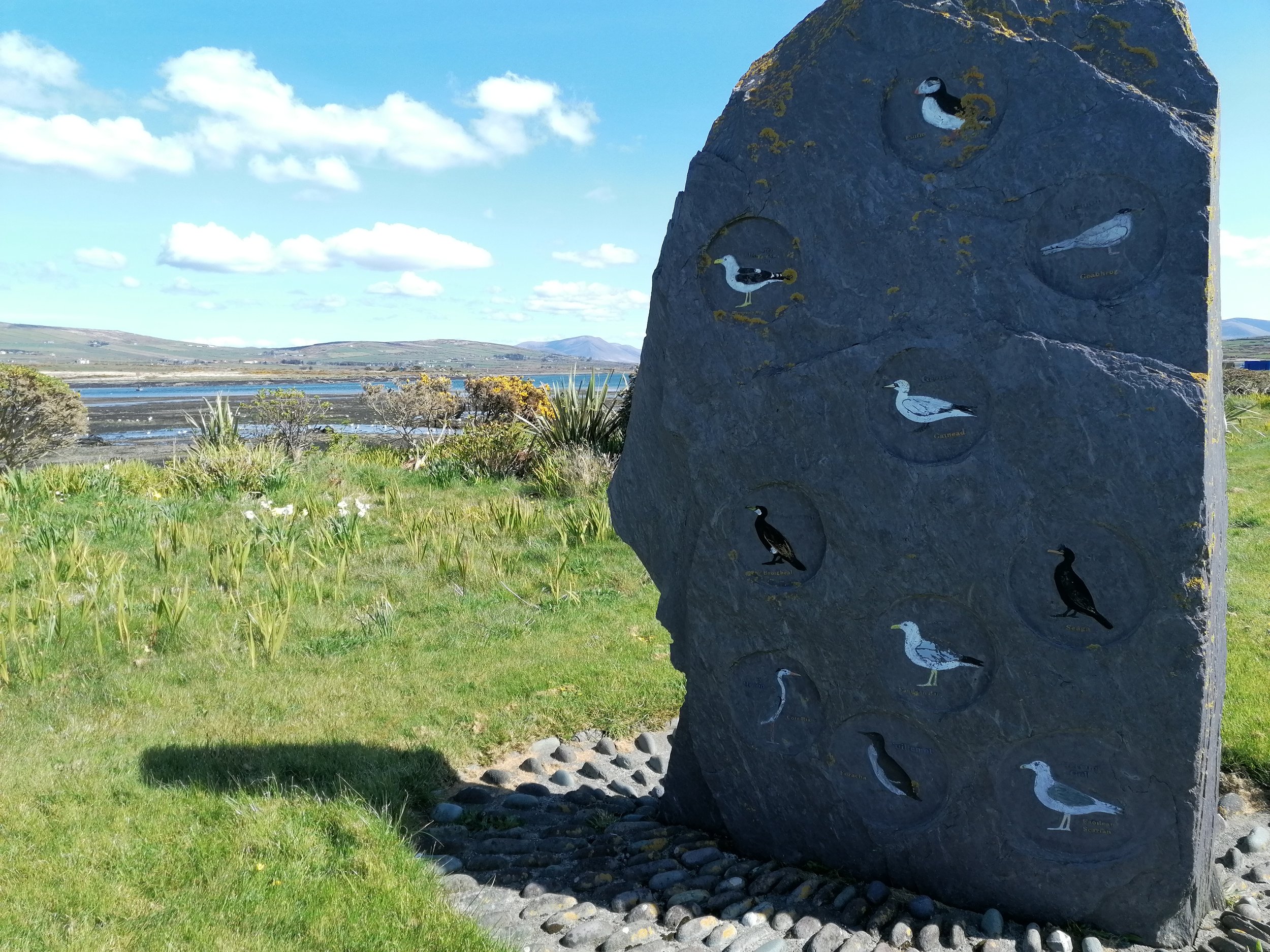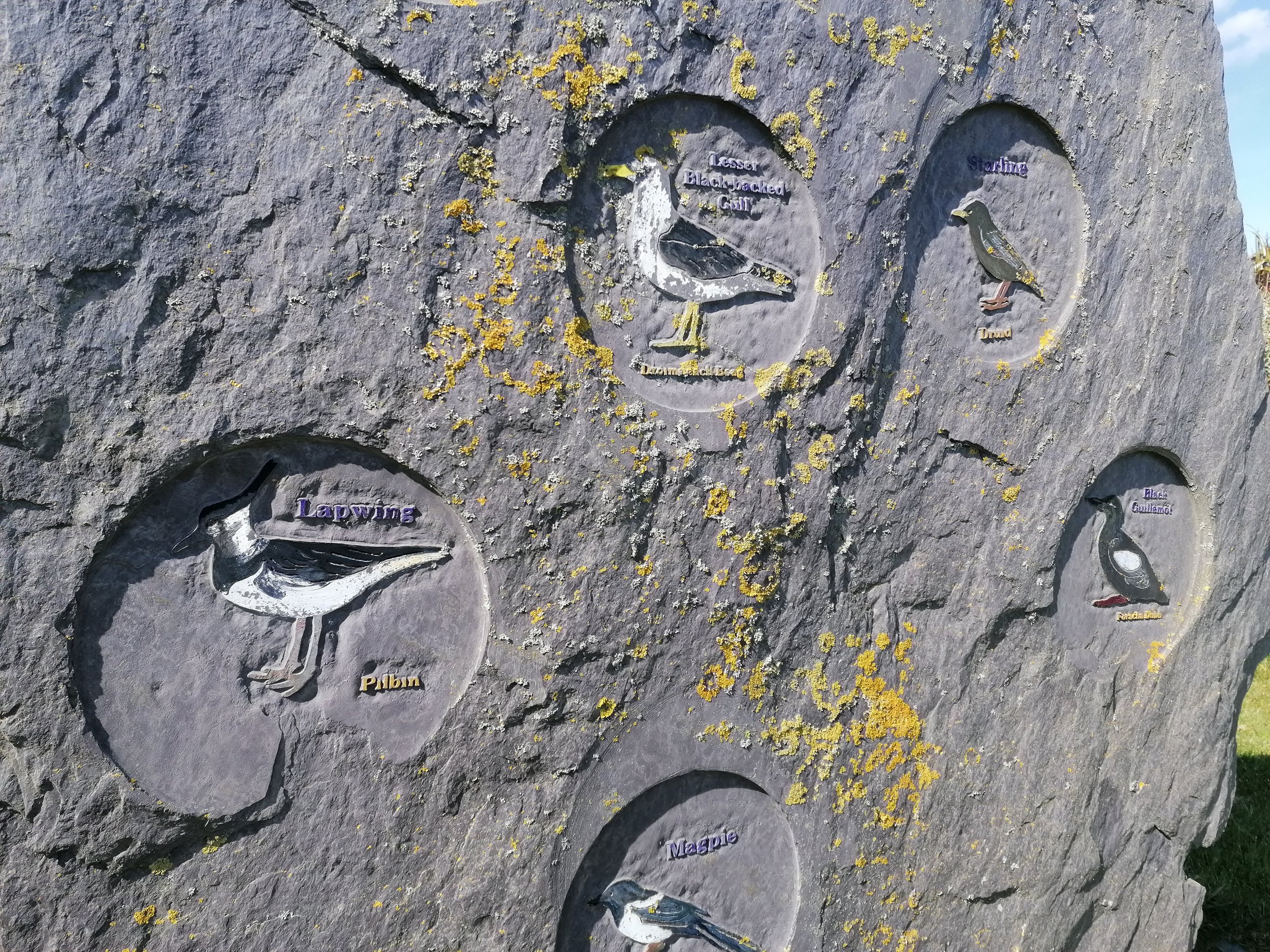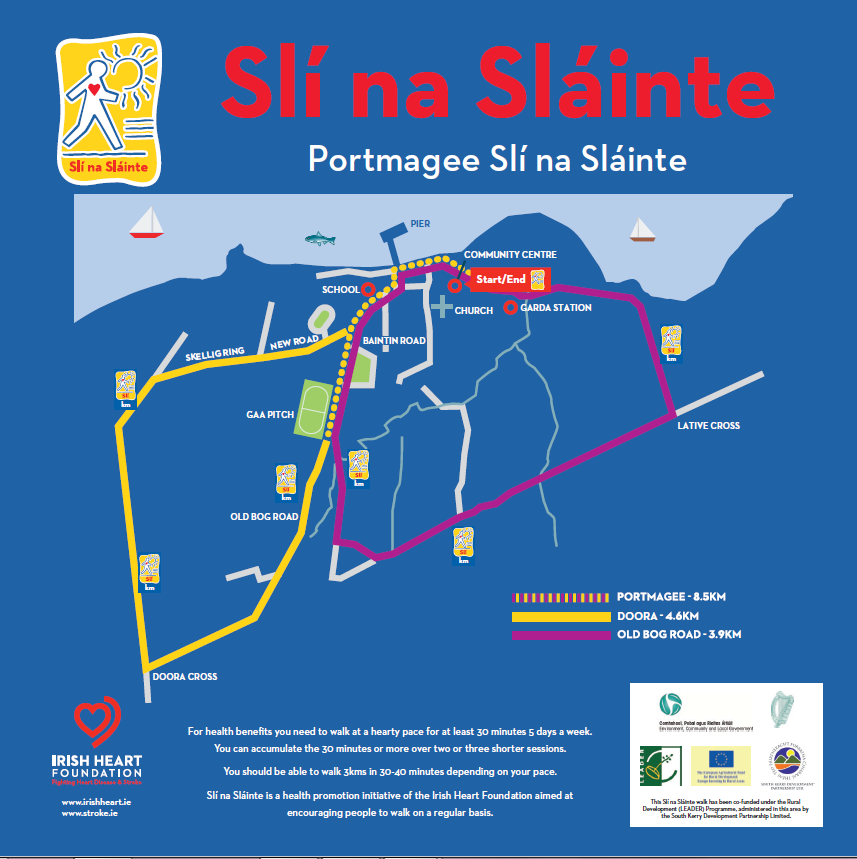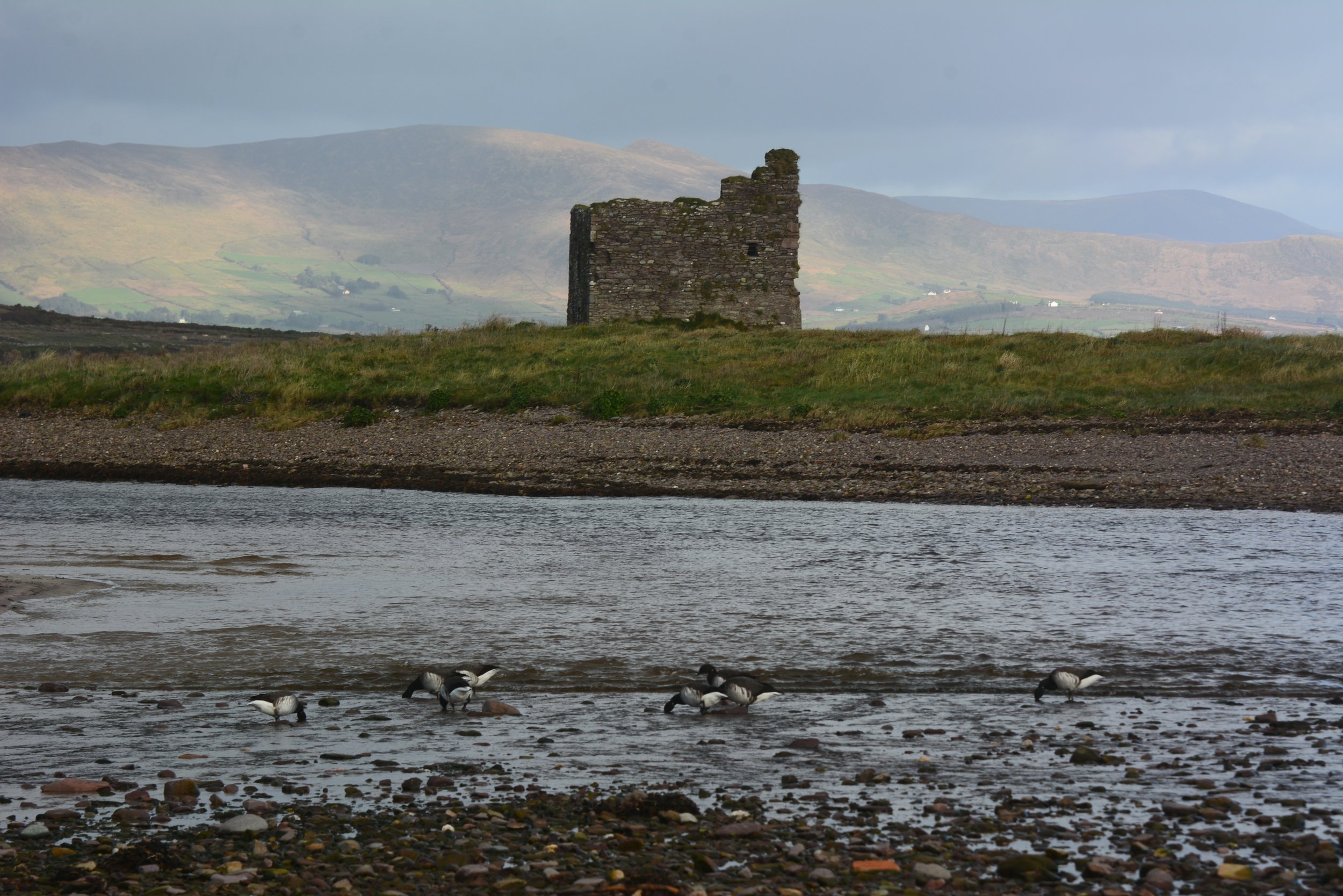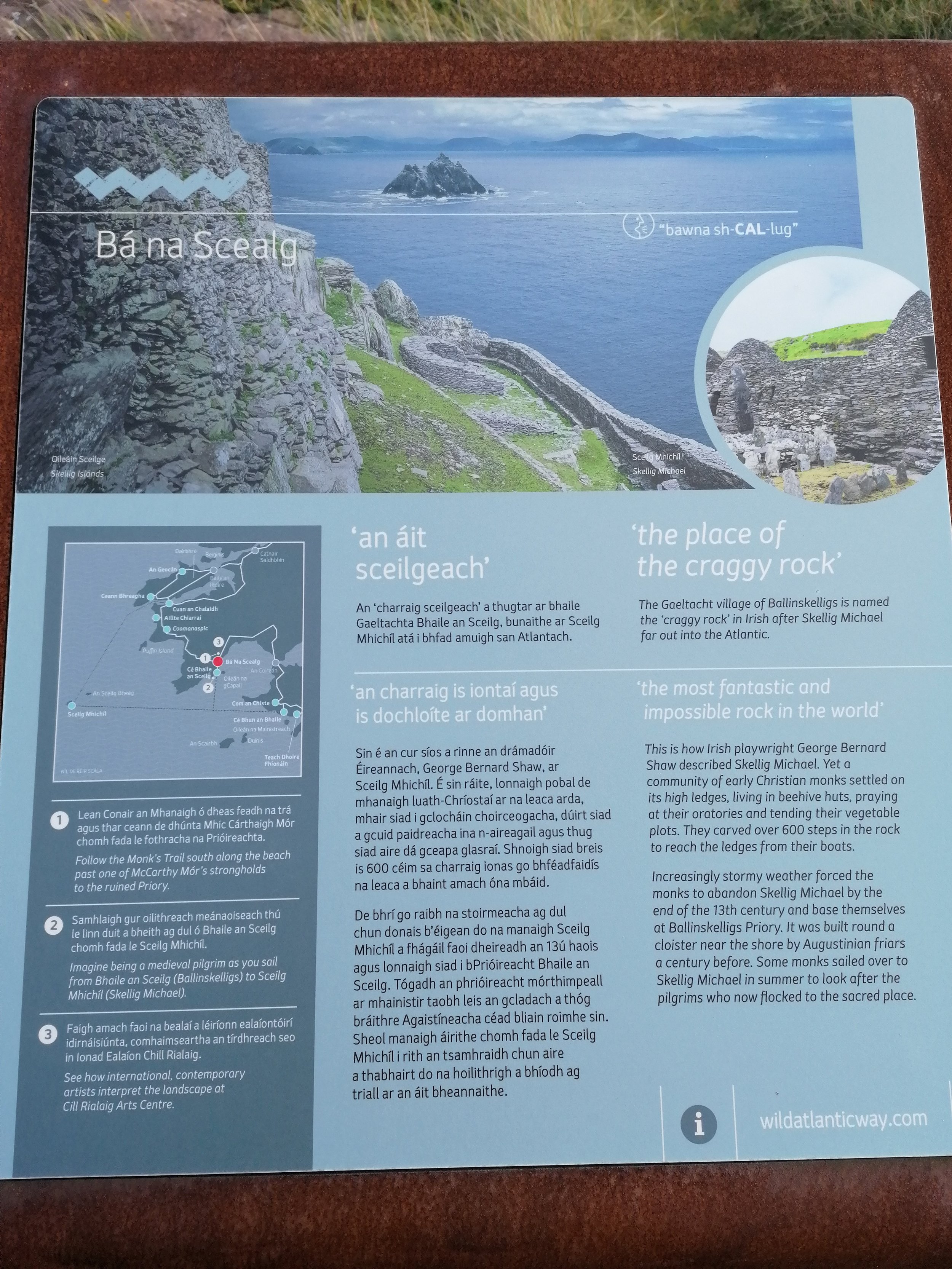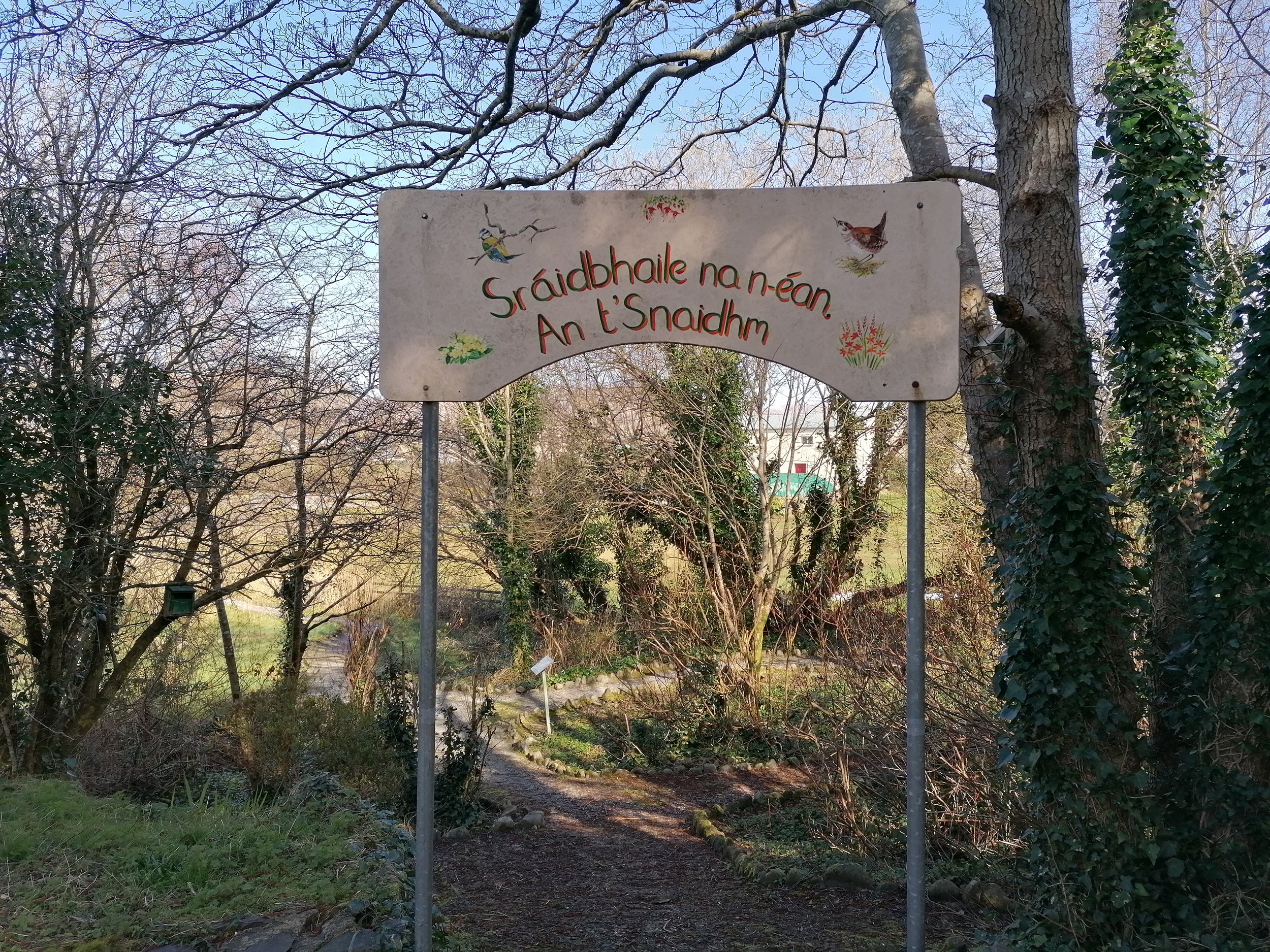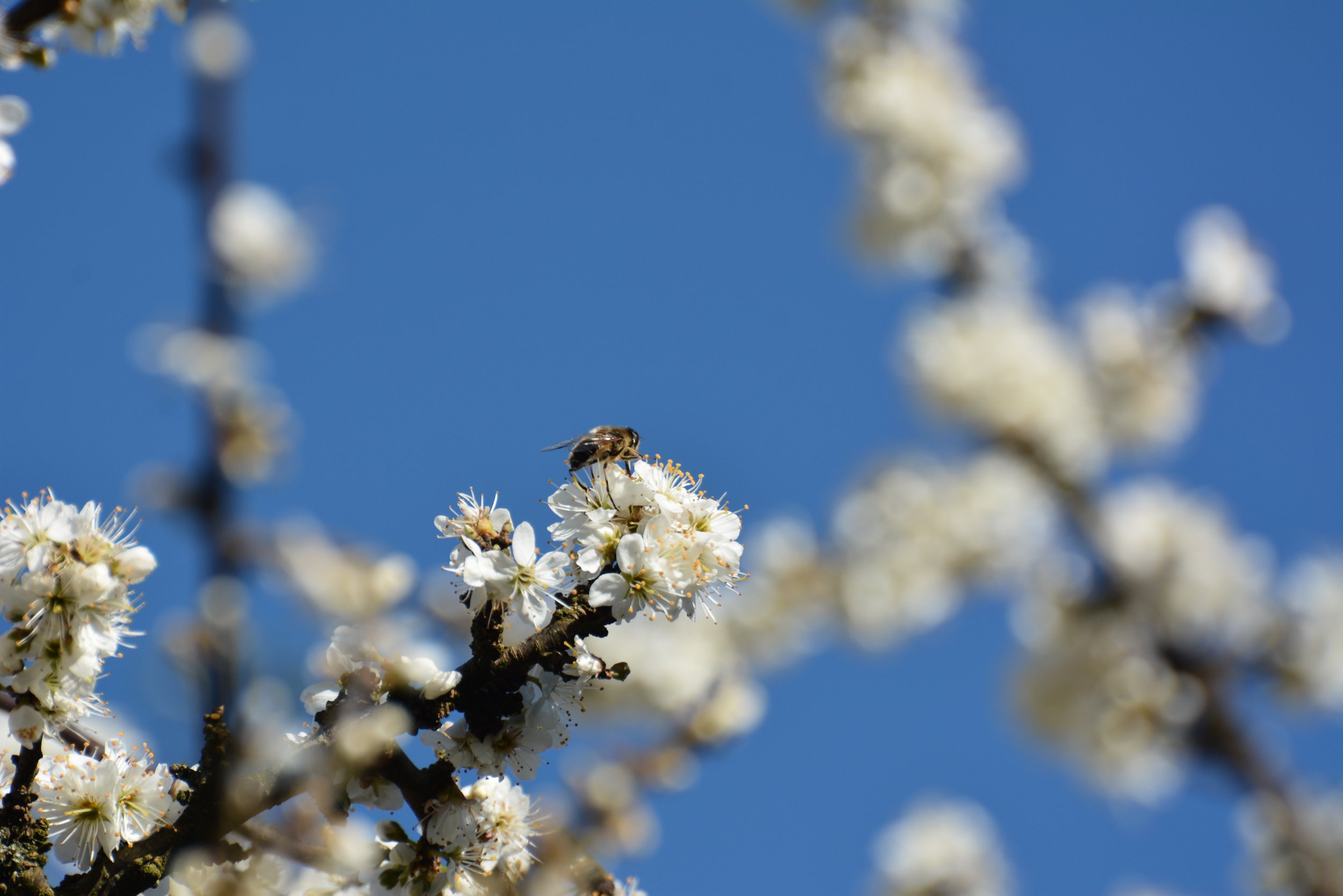Spring on Iveragh
Spring Walks
Dawn Chorus and Spring Migrations
Spring Flora
Amphibians and Reptiles
Each year there is the debate about when spring officially starts. Technically, spring begins with the equinox - derived from the Latin 'equal to night' - which is when the day length equals the night length and occurs around the 21st of March. This occurs twice per year, and in spring it is the point when the light begins to outlast the dark. A significant moment after the long evenings and nights of the previous months - from when the autumn equinox increased our time without sunshine.
But we are not the only ones who feel rejuvenated by the ‘grand stretch in the evenings’. This addition in the length of daylight triggers many reactions all throughout the natural world. Even if you don’t actively look for these changes you might subconsciously register that they are occurring all around you. Vegetation begins to grow, pops of floral colours appear in the undergrowth, the buzzing of bees returns, and the birdsong becomes fuller with additional voices to the choir. Hibernation ends for many species as the cloak of the colder winter months is cast aside and the warmth of the sun is embraced with open arms.
Queen bees, such as this Buff-tailed Bumblebee (An Bhumbóg Earr-dhonnbhuí), reappear in early spring. They rely on early spring flowers for food.
1. Spring Walks
The variety of walks within and around the towns and villages of the Iveragh Peninsula are a perfect opportunity to observe the cascading effects of the arrival of springtime. If you are lucky enough to be able to stroll along these trails on a regular basis you will notice all the subtle changes as they occur. You can keep track of the first flowers you see emerge and perhaps the first butterflies which visit these flowers. Search for buds on trees, the hum of bees, leaves unfurling or ferns uncurling. Soon, these beautiful paths will be touched with spring’s full colour palette. We’ve selected a few of Iveragh’s local trails which are easily accessible with public transport. In addition to the walks, these towns and villages offer a host of local ecotourism businesses to check out. Arts, crafts, tours, guides and dining – you won’t have any problem passing the day away.
Glenbeigh
There are several options for walking trails from Glenbeigh village. The Reennanallagane Loop follows country roads to the shore of Castlemaine Harbour - great for wetland birdwatching. Walking towards Rossbeigh from the village, the Behy River Walk starts at the bridge - look for Dippers (Gabha Dubh) bobbing on the rocks. Both walks have wonderful information points to learn about what you might see and hear along your way. Explore Rossbeigh walks.
Cahersiveen
A beautiful space in Cahersiveen town can be found by the Old Barracks. The park is right on the bank of the Fertha River estuary - watch out for Seals (Rón), Cormorants (Broigheall) and wading birds. Information points tell you the history of the railway and of the stone fort on the grounds. Pollinator friendly areas hum in spring and chiffchaff call from the opposite bank. Sit back, relax, and take in the spectacular scenery including the sea weather cresting the backbone of Cnoc na dTobar in the distance. You could also take a guided walk of the history of Cahersiveen to learn even more. Discover Cahersiveen.
Portmagee
There are a couple of Slí na Sláinte loops around Portmagee village but the park overlooking the Portmagee Channel is a wonderful space. The short walk east along the road to Cahersiveen brings you to a wonderfully creative space. Bug hotels, pollinator friendly flowers and historical information panels add to the charm. A wonderful standing stone covered in bird ID icons is a treasure. An ideal spot to watch winter turn to spring - with the departure of our winter wading birds and the arrival of the spring songbirds. Discover Portmagee.
Ballinskelligs
Apart from the obvious walk on the beach, the Skellig Monk's Trail is a joyous walk accessible from Ballinskelligs carpark. You can take an informative guided option, or if you are fortunate enough to come here often then make sure to note the seasonal changes. The Geese (Gé) make way for the Swallows (Fáinleog) and listen for the hope of a spring Curlew (Crotach or Cuirliún) call - a sign of the rare Irish breeding birds. More information here.
Waterville
The waterfront area of Waterville, known as 'the promenade' locally, is the perfect town stroll all year round. Watch the hills change from autumnal golds to spring green. Heading in the direction of the golf links will bring you along spectacular cliff scenery and on to Inny Strand. Longer walks take you into the surrounding hills where wildflowers - such as orchids - can be found come spring. More information here.
Sneem
The River Sneem passes right through the centre of Sneem and has some fabulous spots to witness the arrival of spring. The ‘Garden of the Senses’ is perfect for watching the succession of spring flowers and their pollinators. A walk along the river away from town will lead you through gardens, wooded areas with bird boxes and even stone pyramids. Keep an eye out for Otters (Madra Uisce) on the river and stick around after sunset to watch Bats (Sciathán Leathair) feed on spring flies. Discover Sneem.
2. Dawn Chorus and Spring Migrants
The song of the Robin (Spideog) is often the first you will hear to kick start the dawn chorus each morning.
One of the events most synonymous with nature and springtime is the dawn chorus. The robin is the only songbird that can be heard singing on a regular basis over winter in Ireland. However, come spring, the increase in daylight and the warmth in the air are cues that food will be more abundant soon – so mating should begin. To secure a mate, many males will hold a territory to entice a female, while for other birds it is all about pursuit. Birdsong contains many messages. Some explain how big and powerful they are, a threat to deter other males, inferring “this is my patch!”. Other messages are those directed at the female, messages to portray that this male bird is the one you want to mate with, the one who will promise the healthiest offspring. For some females, such as the Dunnock (Donnóg), placing your bet on one male isn’t for them. A few courtships to keep the males guessing and she will both ensure healthy fertilization and an extra male to help with feeding the brood. For other species, a pair bond is formed that will last until the chicks have fledged the nest.
The aerial manoeuvres of the Swallow (Fáinleog) are a spectacular sight and a true sign that spring has arrived.
Many of the birds that breed in Ireland live here all year round, but spring will see a whole new collection of birds arrive on our shores. Iveragh is the first stop for many of these migrants, tired after long journeys from far off African lands. Delicate warblers, impossibly small to think of them making such journeys, are some of the first to make land – Chiffchaff (Tiuf-teaf), Willow (Ceolaire Sailí) and Grasshopper Warblers (Ceolaire Casarnaí) all announce their arrivals with their own signature tunes. Soon the skies are graced with the acrobatics of the hirundines – a group of birds that contain the Martins (Gabhlán Binne or Gabhlán Gainimh), Swift (Gabhlán Gaoithe) and Swallow (Fáinleog). For some people, this is truly spring in full swing and even a hint that summer is not far away.
A female Wheatear (Clochrán) - the black eye stripe is much more defined on the male. Members of the 'fly-catcher' family, they arrive in spring and stay until late autumn.
The coasts and uplands of the Iveragh Peninsula have their own niche specialists that aim to raise their family here. Wheatear, a slender and elegant member of the chat family, can be seen twisting and flicking in the air above rocks and walls in cliff top fields. A beautiful bird with a black streak above the eye on a pale head, the name is believed to originate from ‘white rear’ – a nod to the white rump which is distinctive when in flight. The iconic call of the Cuckoo (Cuach) was once a more frequent experience but is now in decline in many regions. An even rarer breeding bird – but maybe still holding on – is the Ring Ouzel (Lon Creige). A member of the Thrush (Smólach) family, the males look similar to a Blackbird (Lon Dubh) but with a white bib. Small areas of the MacGillycuddy’s Reeks are one of the last remaining outposts for these birds.
Why do these birds come to Iveragh to breed and why are certain species in decline? There are a few prongs to this fork but much of it comes down to climate change. Spring is when flying insects and caterpillars emerge. These are vital food groups for many animals, but especially birds. When the weather in the south gets too hot, the conditions in mild and damp Ireland are just right. The migrating birds know this and follow the weather patterns north and the longer daylength here means they can feed for longer too. Perfect for raising a family of hungry chicks. However, changes in our climate mean sudden cold snaps occur at the wrong time of year, grounding flying insects and removing them as a food source. Storms or unseasonal droughts can have the same effect. Combine this with the excessive use of pesticides, removal of vegetation, increase in monocultures (the growing of a single crop), afforestation of the uplands and you have a decline in the food source which is a crucial link in the food chain.
It’s not all doom and gloom thankfully. There has been a great focus on biodiversity and the importance of pollinators. If we continue to put emphasis on the big picture, the connections between all our habitats and wildlife, we may begin to help put the pieces of the puzzle back together again. Individuals are making great efforts in their own gardens, while town groups and councils have made strides in ensuring urban habitats have pollinator-friendly spaces. Restricting hedgerow cutting helps by both protecting nesting bird spaces but also maintains a bounty of food – from berries to beetles and spiders to snails. Bug hotels, bird feeders and bird boxes are all artificial replacements for what naturally occurs in the wild. They are superb educational tools (and give us great insights into the secret lives of wildlife!) but it is important that we care for the wild places in addition to these tools. There is still a long way to go, but our collective cooperation and understanding is our greatest strength.
3. Spring Flora
One of the most visual signs heralding the arrival of spring is the appearance of flowers. Our gardens, roadside verges, parks, greens and beyond, become a source of colour and fragrance for us and a wide array of wildlife. Many of our hibernating pollinators rely on these early blooms to quench their thirst for nectar. What we may see as a weed, they see as a buffet. Here is a selection of the early species which take us from late winter into the joys of spring.
Daffodils
The arrival of Daffodils (Lus an Chromchinn) in late winter might give them the title of the floral guardians that take us into spring. The tall, slender, pointed green leaves appear first before their glorious vibrant yellow heads burst into life. Such a shock of colour is so welcome after a muted winter landscape palette. While there is still debate on whether we have any truly ‘native’ Irish daffodils, the Irish name has a lovely meaning – ‘plant with the bent/bowed head’.
Snowdrops
In tandem with the Daffodil, Snowdrops also appear in late winter to accompany us into spring. Plúirín Sneachta translates to ‘little flower of the snow’, and they can often be found peeping their brave flowers above a layer of frost or snow. On a grassy green carpet, these crisp white flowers really stand out – their three delicate outer petals bravely dancing on the air of a cold early morning breeze.
Lesser Celandine
‘There is a flower, the Lesser Celandine, That shrinks, like many more, from cold and rain; And, the first moment that the sun may shine, Bright as the sun himself, ‘tis out again!’
This extract from ‘The Lesser Celandine’ by William Wordsworth perfectly describes how the flowers of the Lesser Celandine close tight in poor weather but stretch open when the sun appears. Their Irish name, Grán Arcáin or ‘piglet’s grain’, relates to the small grain like bulbs on their roots. The flower is also known as ‘pilewort’ or ‘figwort’ as it was once used as a remedy for piles/haemorrhoids, which were also once called figs. A relative of the Buttercup (Fearbán) – which appear later in the year - their golden cups seem to glow in the spring sunshine.
Colt’s Foot
Another early flower to shine like the sun is the radiant Colt’s Foot (Sponc). At first glance, it may look like a Dandelion (Caisearbhán), but on closer inspection they are quite different. The colt’s foot leaf is large, and heart shaped, and they may form clusters on disturbed ground or hedgerows. The pink-red stems have scale like structures and a ‘u-shape’ where the stem meets the leaf is believed to look like a colt’s foot. The flower is a globe of countless thin, yellow, elongated petals which are like rays of sunshine. These flowers are short-lived, and before some later spring flowers have even emerged, they transform into ‘clocks’ of delicate seeds which embark on airborne journeys to new grounds.
Common Dog-violet
The delicate purple flower of the Common Dog-violet (Fanaigse) begins to appear in April in our hedgerows, verges and woodlands. Easily confused with the Early Dog-violet (Sailchuach Luath), the common dog-violet has a white spur at the rear of the flower while the early dog-violet has a purple spur. The common dog-violet is a very important plant in the life cycle of Fritillary Butterflies (Fritileán) which lay their eggs on them.
Wild Garlic
One of my personal favourites, it is often the smell of Wild Garlic (or Ramsons)that is the first of our senses to recognise the presence of this plant. A member of the Allium family – which includes garlic, onions, shallots, leeks and many more edibles – Ramsons (Creamh) can form dense mats of their short green leaves in early spring before their white star-like flowers appear in April/May. Ramsons can be used in a variety of culinary delights such as pesto, soup or as a garnish. The Three-cornered Leek (Glaschrreamh) is a member of the same family and sometimes also referred to as ‘wild garlic’. Standing taller, similar to a bluebell, the white bell flowers form in bowing clusters at the tip of the stem.
Wood Anemone
The Irish name for the Wood Anemone is Lus na Gaoithe – plant of the wind. Watch the white flowers dancing on the end of their long stems in the spring breeze and you’ll see how they got that name. The white ‘petals’ are actually the sepals, the part of a flower that is often green and encases the petals. A hint of pink can sometimes be seen on some wood anemone. A member of the same family as lesser celandine and buttercups, they spread via underground roots in areas such as woodland floors, before the leaves of trees fill out and reduce the sunlight reaching these habitats.
Blackthorn
There are few sights quite like that of the blossoms of a Blackthorn (Draighean) against a clear blue sky. The white blossoms on black branches appear in spring – before the leaves - and become a haven for a host of pollinators. The blackthorn wood is famously used for walking sticks and the fruit, the sloe berry, is used in various recipes including sloe gin. Folklore around the species includes the stories of the Lunantisidhe (moon fairies) which inhabit the trees, only departing them during a full moon. The Celtic Goddess of Winter, Cailleach, was said to carry a blackthorn stick and the thorns were part of many a witch’s curse.
Irish Spurge
It might be a plant that is overlooked, but Irish Spurge is a fascinating spring character that is absent in many parts of Ireland. The south-west, including Iveragh, is a stronghold for this species. What we may see as familiar short bursts of green-lime plants on our woodland walks, visitors from other areas may find them rare. Known as ‘Bainne Caoin’ in Irish, the ‘smooth milk’ translation likely refers to the milky latex produced when the plant is broken down. This was used to ‘purge’ the body, and a probable origin of the name ‘spurge’, although this is not recommended due to toxicity of the sap.
Nettles
It’s happened us all at some point – the nettle sting! Love them or hate them, these plants are a vital part of our ecosystems. The Common Nettle (Neantóg) begins to appear in March. These young nettles make delicious soups and teas but they serve a far more important role to our wildlife. A raft of insects use the nettle as a home for their Caterpillars (Bolb) – Butterflies (Féileacán) such as Peacock (Péacóg), Small Tortoiseshell (Ruán Beag) and Red Admiral (Aimiréal Dearg) all rely on nettles. Stands of nettles are being planted and preserved in several parts of Ireland to encourage the recovery of one of our rarest and iconic of birds – the Corncrake (Traonach). Once found on Iveragh, the ‘crexing’ call has sadly fallen silent in many parts of Ireland. However, the preservation of mixed wild meadows and nettles provides the habitat these birds need to hopefully make their return.
Bluebells
What a sight to behold is the endless blanket of a Bluebell (Coinnle Corra) rich woodland. They appear in small clusters throughout April, but by May they have assembled in their masses. Often accompanied by wild garlic, these scenes can be made even more serene when lit by shafts of light streaming through the greening spring woodland canopy. Like many of our spring flowers, bluebells over-winter as bulbs hidden beneath the surface. It is a wonder of nature that something which can seem so barren for months can suddenly surround us with an eruption of such beauty.
Orchids
Just as the Snowdrops brought us from winter into spring, Orchids carry us from spring into summer. Some are more common while others are extremely rare. Some might occur in town greens while others may only occur in specialist habitats such as bogs or dunes. There are a number of Irish names for orchids. A common name is ‘Magairlín’, however, ‘Nuacht Bhallach’ (spotted news) and ‘Na Cicíní’ (the chicks) are names for Common Spotted-orchid and Heath Spotted-orchid respectively. To help protect these delicate and rare plants, please look and don’t touch. Never pick them and please report sightings to the National Biodiversity Data Centre here.
4. Amphibians and Reptiles
Frog spawn can sometimes be found as early as late winter. Each black dot is a frog embryo which will soon break free from the spawn and begin their metamorphosis from tadpoles to frogs.
A beautifully camouflaged Common Frog. Spring is a great time to see them on the move as they travel to and from mating pools.
As early as January, a strange sound begins to fill the night-time air. This sound grows louder and more members join the chorus as spring signals the beginning of the mating season of our Common Frogs (Frog). Ponds, pools, puddles, every patch of still and shallow fresh water will be commandeered by amorous frogs. The smaller males clinch the females in a hold called ‘amplexus’ and large clumps of frog spawn form in huge volumes from these mating pairs. This behaviour can happen sporadically over the early spring months but just as quickly as they gathered, the frogs disperse back to leading a largely secretive existence. Their Latin name Rana temporaria, hints at this lifestyle, temporaria referring to this momentary social period of their lives. Many of their spawn ground will become dry by the time summer arrives so it will be a speedy childhood for the tadpoles that wriggle free, 3-4 weeks after spawning. The metamorphosis of frogs is one of the most extraordinary wildlife transformations we can see on Iveragh: the appearance of hind legs, fore legs, the absorbing of their tail or that embarrassing teenage photo of a perfect mini frog that still has a short tail. This is an energy sapping change, and the growth of these tadpoles to froglets is timed perfectly to coincide with the food that spring provides.
Iveragh is fortunate to be home to one of Ireland's most endangered amphibians, the Natterjack Toad.
Iveragh is home to Ireland’s rarest amphibian, the Natterjack Toad (Cnádán). Natterjacks are Ireland’s only native toad and are present in just a small number of protected areas. Iveragh has a handful of these sites and it is with the work of local landowners, the National Parks and Wildlife Service and dedicated experts, that allow this enigmatic animal to cling on. They are the last of our amphibians to emerge from hibernation which, for natterjacks, is usually spent deep in burrows within sand dunes, or where dunes merge into heath. It is very important not to disturb their habitats or behaviours but, if you do happen to find one, they can be distinguished from frogs by a few obvious features. Natterjacks have a distinctive yellow stripe along their spines and ‘warty’ skin, both of which are absent in frogs. The most notable difference will be if you are lucky enough to see a natterjack on the move. Sometimes called a ‘running toad’, natterjacks ‘walk’ and stroll over vegetation while frogs hop using their elongated hind limbs. Largely nocturnal, these toads have a raucous ‘churrr’ call which can travel long distances during the mating season. Unlike the clumps which are formed by frogs, natterjack toad spawn appears in long single strings. If you are extraordinarily lucky and find some of these strings in your local area, then please leave it undisturbed and report it to your local NPWS ranger.
Adult Smooth Newts move from the land to shallow ponds in spring to begin mating. Here you can see a male (with spots) pursuing a female (light brown). Note his tail quivering at 14 seconds - part of the courtship behaviour.
Amphibians include frogs, toads and newts and they are a group of animals which share unique physical features and behaviours. They breathe through their skin, which is thin and needs to stay moist, and are ‘ectotherms’, meaning their body temperature is controlled by their environment. The third, and arguably the cutest, amphibian that can be found on Iveragh is the Smooth Newt (Earc Sléibhe). A common misconception is that newts spend all their lives in fresh water but, similar to the common frog and natterjack toad, adults spend much of their year on land and only return to water when it’s time to breed – spring. Females are light brown in colour while a breeding male is adorned with a wavy edged crest running the length of its spine. You won’t hear any mating calls, newt mating is an underwater endeavour, and it is believed the male emits a scent, or pheromone, which he wafts towards a female using a motion with his tail. Chances are you will never see a newt egg. The female takes great effort to conceal them by reversing onto a blade of vegetation, laying an egg on the surface, and then delicately folding the leaf over using her hind legs to conceal it. When the eggs hatch, the young fall to the base of the pool where they hide from predators in the silt. These nymphs have external gills to allow them to breathe underwater. Their metamorphosis starts with the growth of fore limbs, then hind limbs, the absorption of their gills and then a move onto land – these young newts are known as efts.
The Common Lizard is Ireland's only native terrestrial reptile. They emerge from their winter hibernations when the warm touch of spring entices them out of their hiding places.
While we may have some exciting reptiles visiting Irish waters in the form of turtles, Ireland is home to just one native terrestrial reptile – the Common Lizard (Laghairt Choiteann). Present since the last ice age, this remarkable lizard is well adapted to our cool, damp climate. Hibernating over winter helps them avoid the worst of our weather but, once things begin to warm up, these lizards emerge in early spring. The males are the first to peep out their heads from their winter slumber before the females and last year’s young follow. They rely on the warmth of the sun to raise their body temperature, so you might find them ‘basking’ on old stone walls or logs in south-facing landscapes. When they are warmed up, they move quickly in their environment, chasing spiders, flies, a mate or a rival. Mating occurs in spring and can be a violent affair. Males will fight each other for a female and males hold the female with a firm bite during mating.
While their amphibian cousins laid their spawn/eggs at the time of mating, the story of the common lizard is a different tale. One of the adaptations these lizards utilise to survive in cooler climates is not to lay eggs like those lizards and snakes found elsewhere. They have live young. Their scientific name is Zootoca vivipara, the first word being Greek and the second being Latin but both meaning ‘live birth’. The female stores the young internally and spends more time basking in the sun to aid their development. When they arrive in a thin membrane in August, they are ready to fend for themselves. A bit like frogs and toads, newts and lizards are sometimes mistaken for each other. Although they have been occasionally seen swimming, lizards are rarely found in water like newts. Newts move slowly on land and have smooth skin, while lizards move quickly and have scales. We would never recommend you handle any wildlife but, if you happen to come across a dead one or get a close-up photograph of one, you will notice that lizards have five toes on their front feet while smooth newts only have four.



